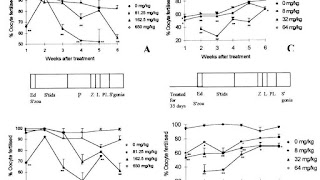The hamster zona-free ovum test (HZFO test), or hamster test is a method for diagnosing male infertility due to the inability of the sperm to penetrate the ova. This test has limited value for most people experiencing infertility.
Video Hamster zona-free ovum test
Procedure
In this test, sperm are incubated with several hamster eggs. After seven to twenty hours, the number of sperm penetrations per egg is measured. The hamster eggs have had the zona pellucida, the outer membrane, removed- hence, zona-free.
Having all eggs penetrated by multiple sperm is considered to be a positive sign for fertility. Results suggest that men whose sperm fail the hamster test are a third as fertile than those whose sperm pass.
Donated sperm and intracytoplasmic sperm injection techniques are considered more strongly for those whose sperm fail this test.
Contrary to some assertions by medical professionals, if the human sperm penetrates the hamster egg, a hybrid embryo is indeed created. The resulting hamster-hybrid is known as a humster. These embryos are typically destroyed before they divide into two cells and are never known to have been implanted in either a hamster or human uterus to develop.
This test evaluates the acrosome reaction of human spermatozoa. However, the incidence of acrosome reaction in freely swimming human sperm does not accurately reflect the fertilizing ability of the sperm.
Maps Hamster zona-free ovum test
Legal permit
The practice is made licensable in the United Kingdom by the Human Fertilisation and Embryology Act 1990.
Significance
This test has a poor predictive value for the success of fertilization in IVF treatment at any insemination concentration. No strong correlation has been found between hamster egg penetration rates and the various semen parameters and the role of the hamster egg penetration test in the investigation of the causes of infertility should be evaluated further. However, a negative result on the hamster test correlates with a lower probability of the man's partner becoming pregnant.
References
Source of the article : Wikipedia

